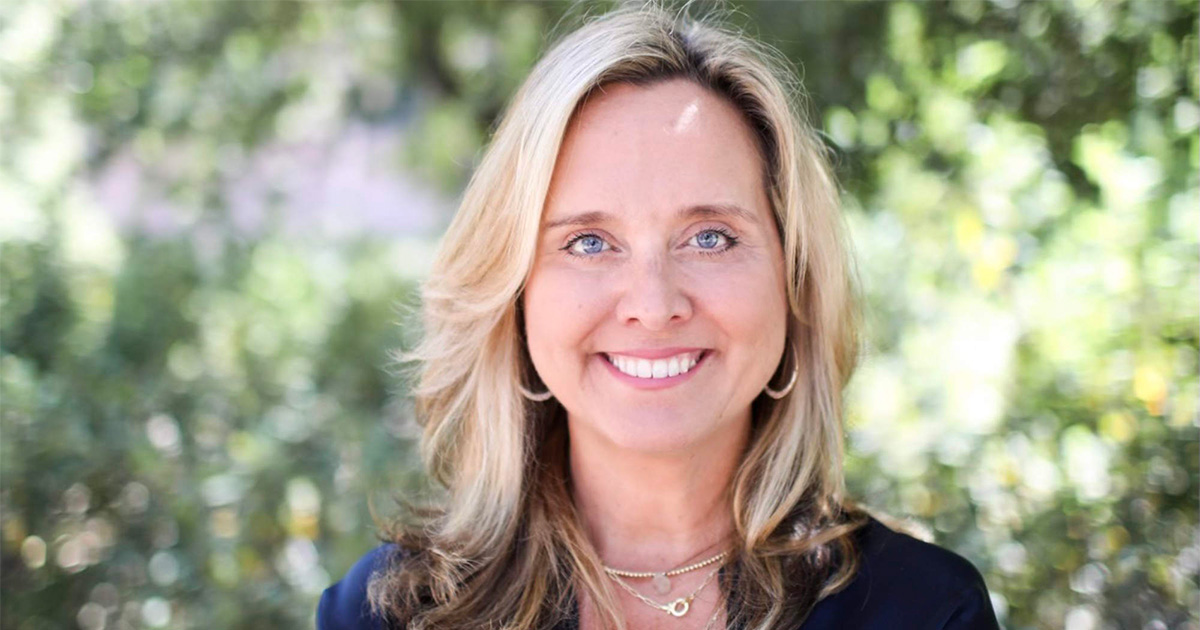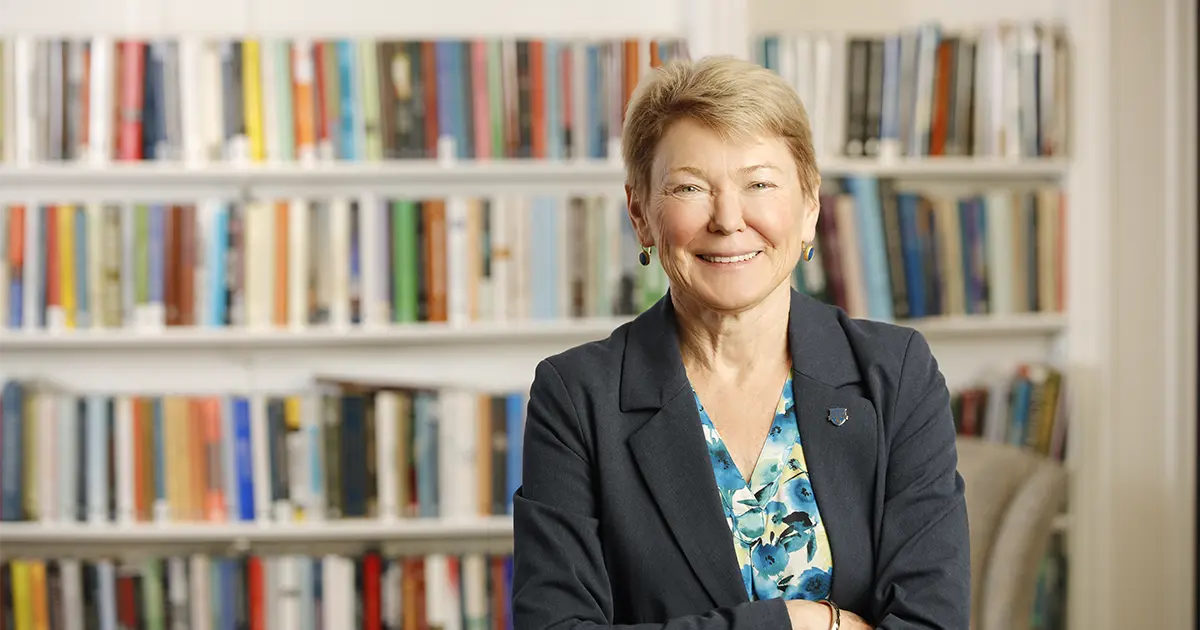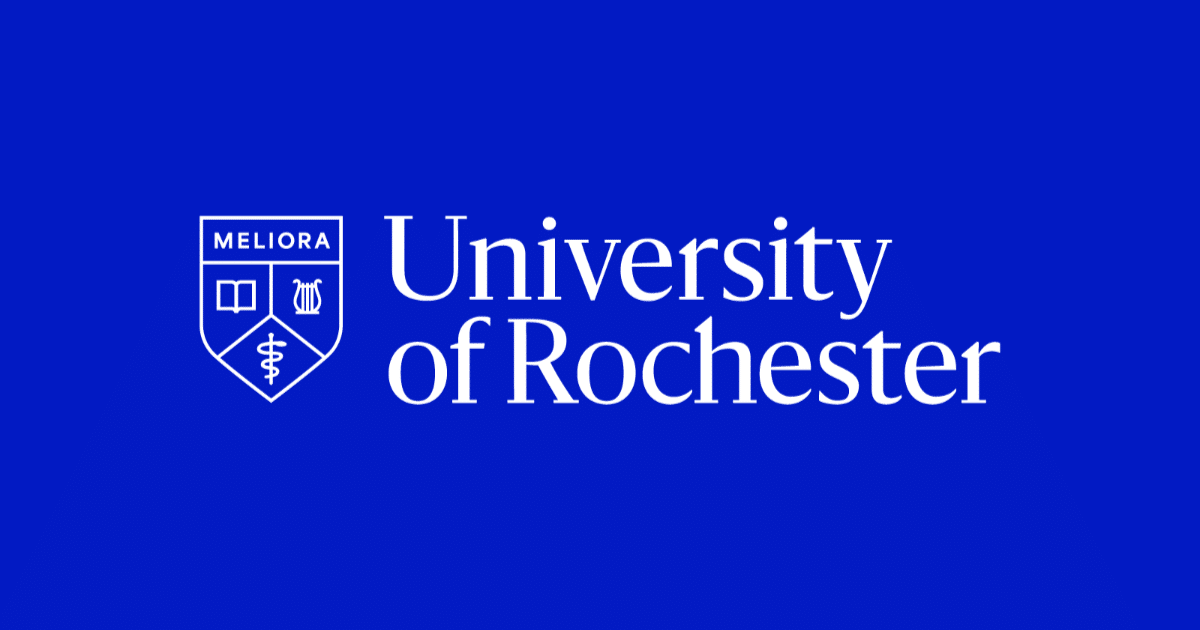Strat Chat with Page Hetzel
Rochester’s vice president for marketing and communications talks about the work that tells the story of ‘ever better.’
Rochester’s vice president for marketing and communications talks about the work that tells the story of ‘ever better.’
TL;DR
The Office of University Communications is now University Marketing and Communications, an evolution initiated by the arrival of Vice President Page Hetzel, who is leading efforts to enhance University communications and build a marketing entity. Her team is engaged in several projects that are meant to help the University build a stronger brand and global reputation.
October of this year will mark two years since Page Hetzel became the University of Rochester’s first-ever vice president for marketing and communications. If you haven’t been keeping score at home, it’s the marketing part that is new.
The addition of “marketing” to the role Page stepped into signaled an evolution. Up until 2023, the Office of University Communications was focused on sharing University news and telling the University’s story through its people, programs, research, healthcare, and all the other ways it carries out its mission to Learn, Discover, Heal, Create—And Make the World Ever Better. In practice, the office was communicating with its hands cupped around its mouth; it was time to start using a megaphone.
Page’s arrival launched the development of new department functions to serve a more comprehensive vision, one that also shapes the University’s narrative in ways that help enhance its reputation in the eyes of its peers, prospective students and faculty, and grant-awarding institutions. It was the beginning of University Marketing and Communications (UMC).
Emphasis on “beginning.”
UMC is far from its final form—especially its marketing arm—and is still adding team members, refining processes, and assessing how it can best be a University partner, wield Rochester’s brand, and employ content in the University’s digital landscape and flagship channels. But that hasn’t kept UMC from supportingBoundless Possibility, which is what Page discussed in a Strat Chat on March 21.
Bad news for anyone who’s here because they attended Page’s Strat Chat and heard there was going to be a recap of the session: the session wasn’t recorded.
Good news for those people and everyone who missed the session: we got Page to take time out of her busy schedule to rehash some of what she covered.
Better Things: Let’s start really general—how is UMC supporting the strategic plan?
Page Hetzel: What we do supports everything, right? Marketing and communications are embedded in the mission of the entire enterprise as a critical support system, which is to say we’re always working in the background. This includes the strategic plan. However, we do have a distinctive place in the research and reputation goal, which is tied to building the University’s brand.
We, University Marketing and Communications, need to drive and streamline that work. We’ve been gradually making those efforts more intentional and working toward specific outcomes. That’s led to conversations about how we can work with other teams to create one clear message rather than us all going to market differently. It’s important that we’re reinforcing ourselves in the right way. So, we’re working on our brand architecture and strategy.
In Practice: “Make the World Ever Better”
The University’s first-ever enterprise marketing (image) campaign
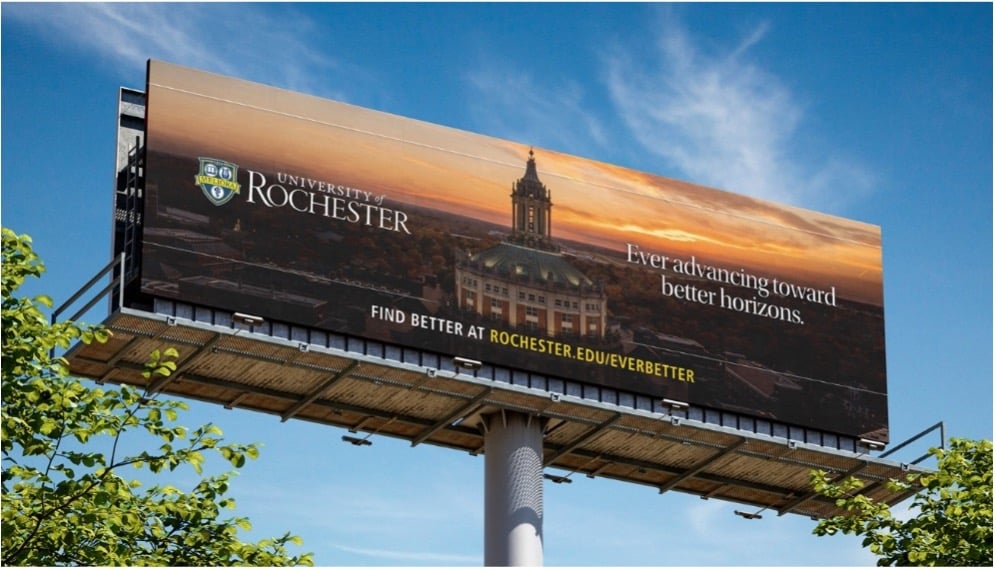
Can you say more about how the marketing work is going to contribute to enhancing the University’s reputation?
At the macro level, the things I’ve been talking to the president about are all about brand.
Time out. You’re talking about building our brand, but we happen to know there’s a University brand project coming down the road. So, how do you reconcile the work you’re doing now with that future work?
We didn’t want to wait to do our brand work. The image campaign was essentially a bridge campaign we could do now and feel good about its authenticity. The actual brand project will take this work further. We’ll be talking a lot about what is and isn’t a brand, refresh our visual design, and create more complex structures, like how sub-brands and identities work together.
So, we’re in Phase I of the image campaign, which is an evergreen campaign. Phase II might look slightly different after the brand work, but the current campaign has a lot of the DNA that reflects where we’re heading.
OK—now we can go back to reputation-building. How does that work?
The brand and reputation work enables follow up marketing programs, especially in admissions. People have to be aware of us before they can really start to consider us. It’s kind of a one-two punch. We are creating the strong brand so that we can move people to take an action, whether its learning more about us, attending an event, applying—all those kinds of things.
We’re currently running several campaigns for admission and an influencer campaign where we’re trying to reach specific audiences, and we want to do this in a unified way across the University for the best results but also for efficiency.
In Practice: Admitted student celebration packet
Part of an integrated enrollment marketing campaign
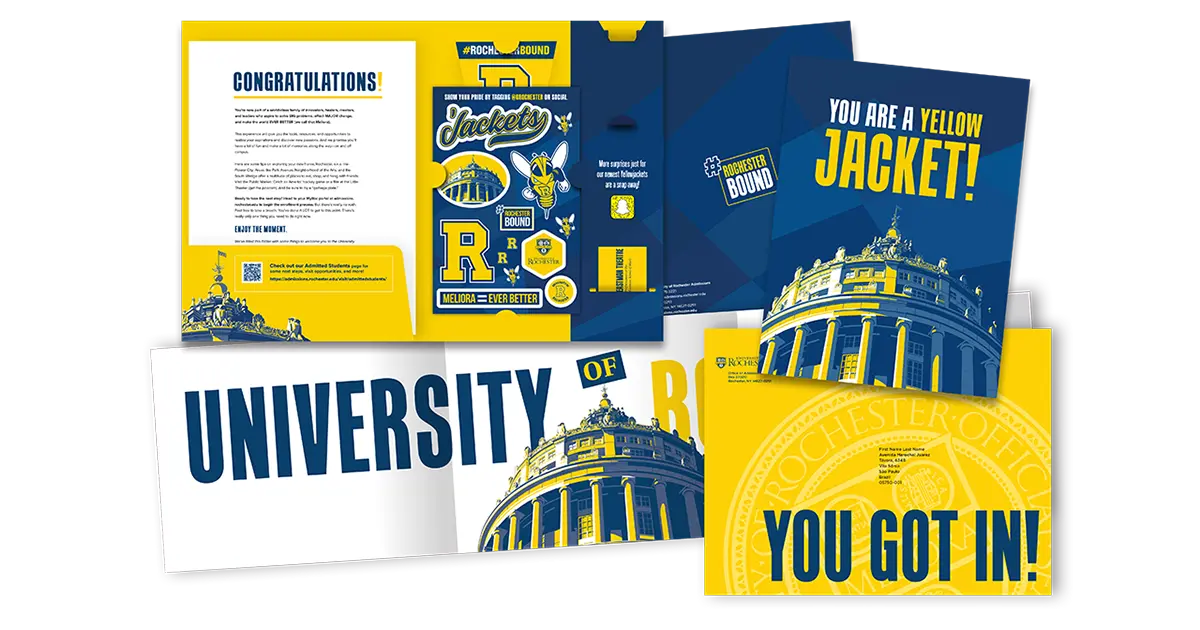
Reputation is a big part of the strategic plan’s research goal. There are tactics within it and other goals where the work of your office is kind of implied. Are you talking with goal leads about this?
My team and I have been meeting with the research executive committee to talk about the ways we can build our research marketing portfolio. So, what are the key areas that we want to build out? As our website evolves, you’ll probably see more pages where we’re planting a flag for strategic areas of focus as a way to boost recognition and feed our reputation and image.
Another thing that’s happening is we’re looking more closely at how we can really underscore the impact our research has on communities at regional, national, and global levels. And that’s why we’re also very connection to the student experience side and that goal because this is our product. This is how we’re selling the University to prospective students. So, ideally this will also become something that John Blackshear can use within his community—or vice versa, he does something that we then use in our admissions marketing.
I think if we tighten those connections, it helps our work, which will ultimately help the strategic plan.
In Practice: U.S. News & World Report mailer
A campaign targeting academic influencers who shape the report’s peer assessment score
Shifting to something…uncomfortable. Universities are in danger of losing critical funding due to federal policy changes. Is that influencing how we’re telling the university’s story or who we’re telling it to?
I thought about this a bit before I presented to the University [Board of Trustees] because they could say, “Wait—why would you do this now?” And the reality is we haven’t done any of this enough, so we can’t wait. We need to be present and demonstrate our relevance by sharing who we are and the impact we have on society in ways we never have before. I really thought about that because it is a significant investment. But we can’t wait. This is part of running our institution.
I do think—and this did not get talked about in the Strat Chat—as we think about unifying our branding and being more cohesive, we have to shift our focus toward outcomes. So, that might mean doing more to highlight the value of a Rochester education. There’s another portion of our content development that will need to have message like, “Did you know this treatment is possible because…” We need to be doing more to shape how our work is perceived by people in and outside the University community. I don’t think enough people understand the role research plays in new medical treatments, new technology, and other advancements that they are benefitting from.
In Practice: “My Rochester Story”
A series highlighting people in the University community and the impact Rochester had on them.
Louder for the people in the back! Sorry. You’ve been very generous with your time, so this will be our last question: What’s next for your office? We alluded to the branding project, but is there anything else you’re excited to dig into?
It’s all about establishing comprehensive platforms, and it’s about having a brand that unites us and has the right kind of architecture. That will put us in a place where we won’t be recreating the wheel all the time; we’ll be able to easily find ways to leverage existing assets. So, I’m excited to get that done because it will help us be more efficient and effective.
The admissions work is pivotal. I think we’re going to see results from that this cycle, and we’ll find ways to build upon that success in other areas.
The digital platform and investing in analytics are also going to be key for us.
We’ve had a lot of “firsts” and we’re launching and establishing a lot of different things that are helping us build a modern marketing entity. When you think about it that way, it’s all exciting.
Related updates
President Sarah Mangelsdorf reflects on the University of Rochester’s strong progress, campus growth, and resilience heading into 2025–26.
The refreshed brand builds on the University’s 175-year legacy while spotlighting its vision and values.
The comprehensive campaign seeks to raise $1.75 billion for Rochester’s future while expanding alumni and community engagement.
